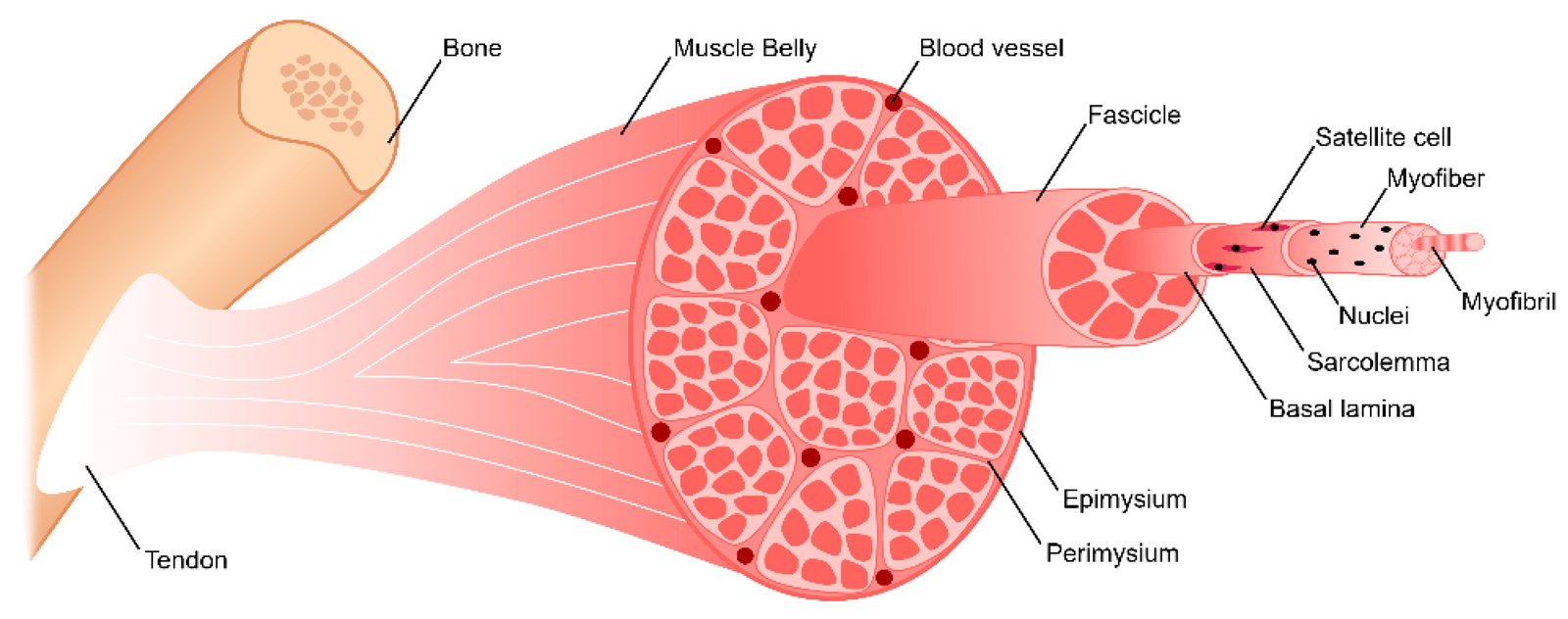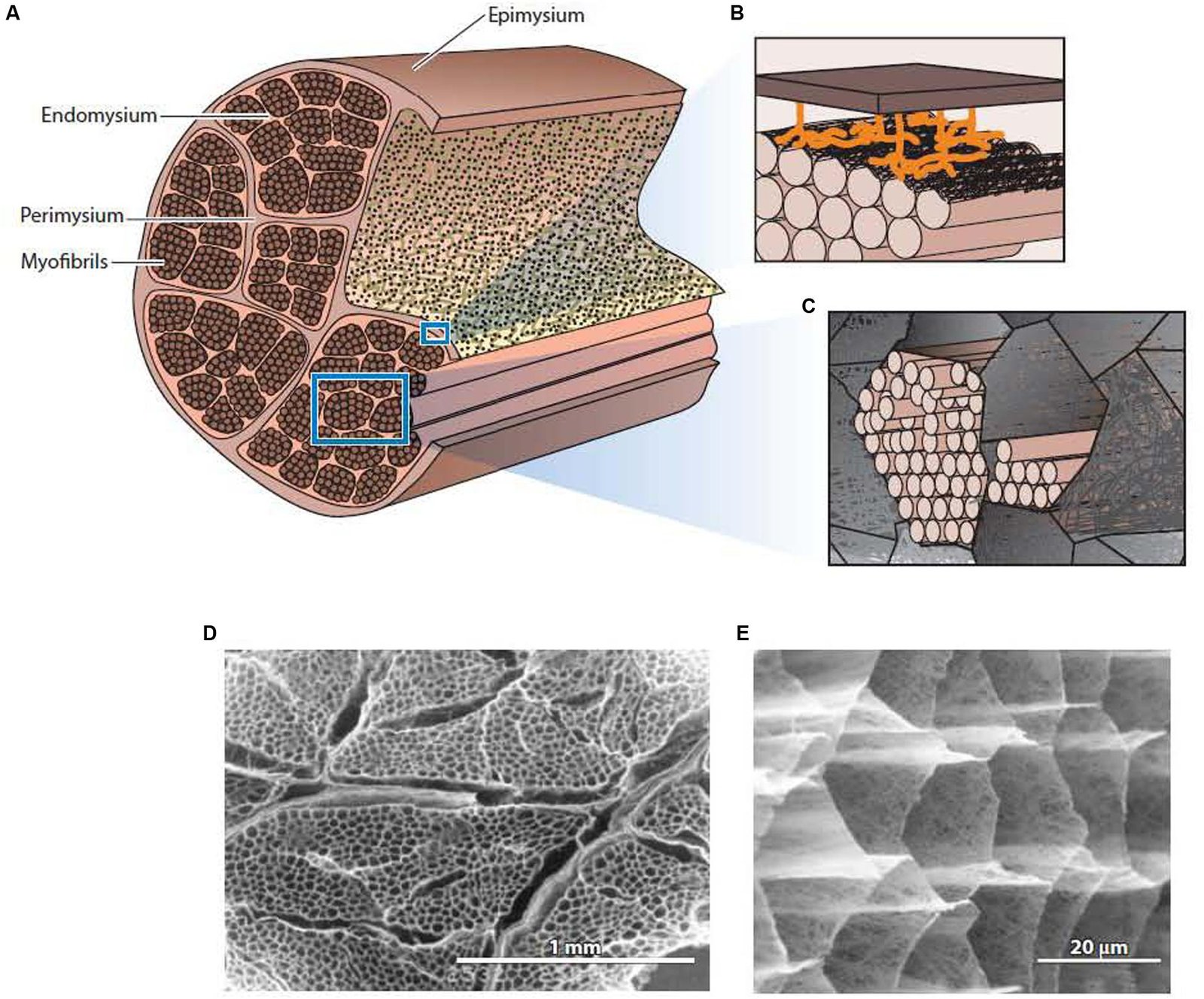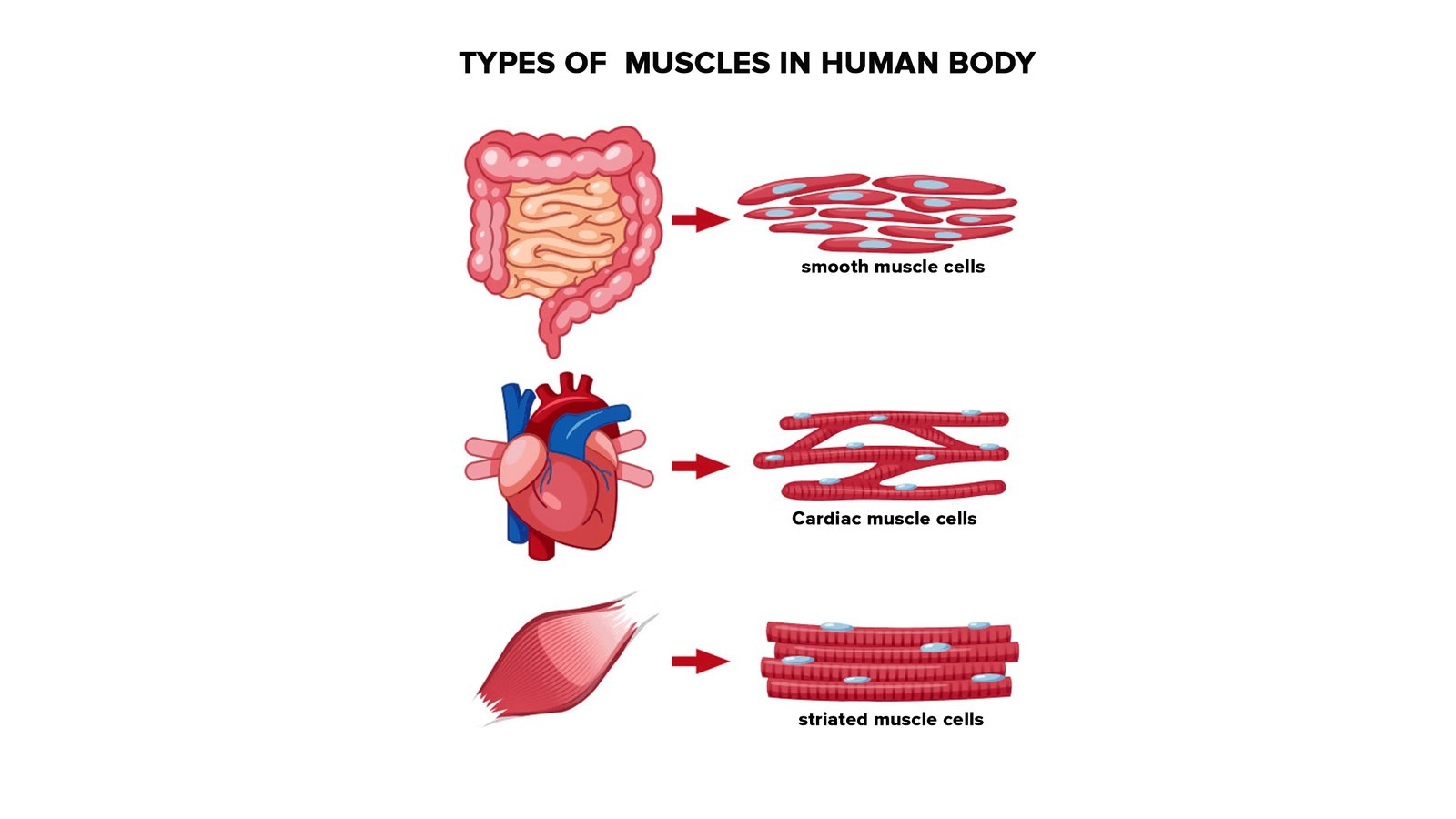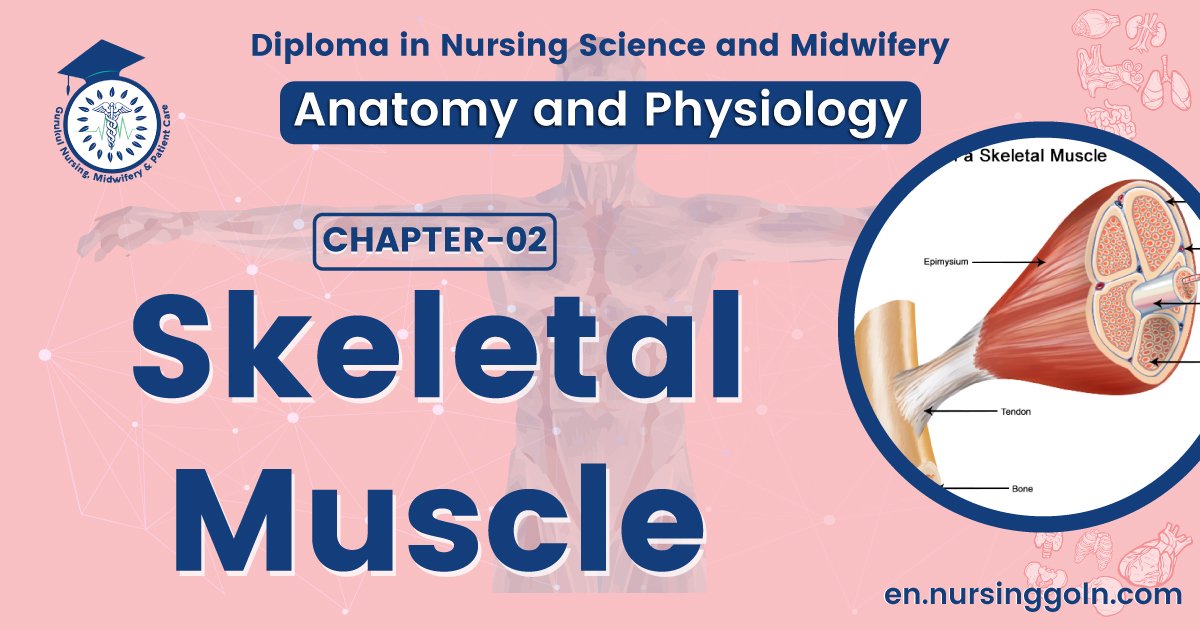Concept of Skeletal muscle – The course is designed for the basic understanding of anatomical structures and physiological functions of human body, musculoskeletal system, digestive system, respiratory system; cardiovascular system; urinary system, endocrine system, reproductive system, nervous system, hematologic system, sensory organs, integumentary system, and immune system. The aim of the course is to acquire knowledge and skills regarding anatomy and physiology.
Concept of Skeletal muscle

Skeletal muscle
Skeletal muscle is found throughout the body and functions to contract in response to a stimulus. Skeletal muscle serves many purposes, including producing movement, sustaining body posture and position, maintaining body temperature, storing nutrients, and stabilizing joints
Layers of Skeletal Muscle fiber

- Epimysium: This is the connective tissue wrap just under the deep fascia that surrounds the entire muscle.
- Perimysium: This connective tissue surrounds each individual fascicle (bundle of muscle fibers).
- Endomysium: This is the connective tissue wrapped around each individual muscle cell (fiber).
- Myofibrils: Threadlike fibrils that make up the contractile part of a striated muscle fiber.
Characteristics of different types of muscle

Skeletal muscle
Location: Attached to the bones (skeleton)
Function: Movement of the body and also prevention of movement of the body
Antomical description: Very large, cylindrical, multinucleated cells arranged in parallel bundles.
Control: Voluntary
Speed of Contraction:Fast
Cell Nuclei: Many nuclei (located at periphery of long cylindrical muscle fiber)
Cardiac muscle
Location: Found only in heart
Function: Pumping of blood
Antomical description: Short cells with blunt, branched ends. Cells joined to others by intercalated discs and gap junctions.
Control: Involuntary
Speed of Contraction: Moderate
Cell Nuclei: One nucleus (centrally located)

Smooth muscle
Location: Found in the wall of blood vessels and in the walls of organs of the digestive, respiratory, urinary and reproductive tracts
Function: Control of blood vessel diameter and movement of contents in hollow organs
Antomical description: Small, spindle-shaped cells joined to each other by gap junctions.
Control: Involuntary
Speed of Contraction: Slow
Cell Nuclei: One nucleus (centrally located)
Read more:
